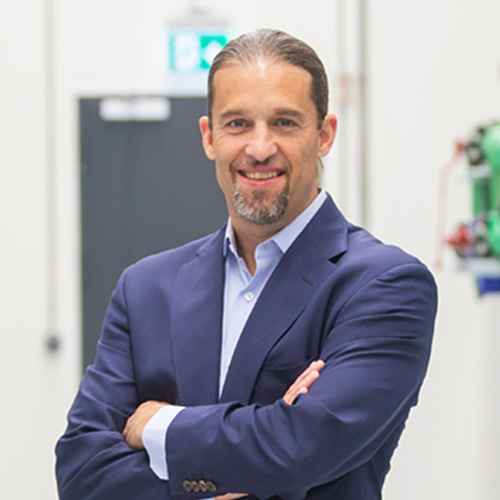The energy required to power advanced AI software is contributing to carbon emissions, something data centre managers are working tirelessly to reduce. Tate Cantrell, CTO, Verne Global, discusses this further and highlights the importance of infrastructure improvements, renewable energy and facility locations on data centres’ environmental impact.

As Generative AI continues to take the world by storm, businesses from every sector are diving in headfirst. But there is a crucial factor to consider. These cutting-edge applications call for significant computing power – and as the popularity of Generative AI continues to soar so will the energy demand alongside it.
With fossil fuels proving disastrous for the planet, paired with overloaded, often unstable power grids, it’s clear that more innovative and sustainable solutions must be prioritised if organisations are to utilise compute-heavy AI technologies while overcoming these challenges.
Here, the data centre industry has a key role to play. Data centres that are designed to deal with the high-intensity compute required to meet AI’s needs efficiently while utilising renewable energy sources, represent the best of both worlds.
Generative AI: unparalleled power and carbon emissions to match
It’s no secret that AI is power-hungry. Training Deep Learning applications, for example, requires an extraordinary amount of computational power – OpenAI’s research found that this has been doubling every 3.4 months since 2012. This necessitates high energy consumption and therefore, often, significant carbon emissions.
Generative AI goes beyond traditional AI, which can only classify and analyse the data it is provided to detect patterns and make conclusions. Generative AI is more complex and can produce new or original content, like chat responses, software code and even deepfakes. Unsurprisingly, this complexity requires more computing power and consumes more energy.
In 2019, researchers at the University of Massachusetts found that the energy consumed in creating a Generative AI model named BERT, consisting of 110 million parameters, was equivalent to the energy used for a round-trip transcontinental flight by a single person. More recently, researchers from Google and the University of California, Berkeley estimated that creating the much larger GPT-3, which has 175 billion parameters, consumed 1,287MW hours of electricity and generated 552 tons of carbon dioxide, the equivalent of 123 gasoline-powered passenger vehicles driven for one year.
The more powerful the AI model, the higher these emissions will be. With organisations across industries now utilising Generative AI for a variety of purposes, the potential impact on the environment is staggering – and that’s not to mention the introduction of ChatGPT to the public, which has created another path for carbon emissions through Generative AI-powered searches. Reuters reports that ChatGPT is the fastest-growing consumer application in history, estimated to have reached 100 million monthly active users in January 2023, just two months after launch.
The enormous computational power needed for AI technologies and the extremely high energy consumption this entails is naturally a cause for concern. The carbon cost of these applications is especially high when taking into consideration the energy required to keep equipment cool – with the average data centre committing 40% of its energy consumption to cooling alone. As we face an increasingly acute climate crisis, it’s more important than ever that both data centres and organisations investing in AI technologies consider the carbon impact and find solutions to optimise energy efficiency and sustainability.
Optimising data centre infrastructure
Fortunately, there are steps organisations can take to access innovative AI technologies, whilst minimising their environmental impact.
For data centres to be ready for the extreme demands of AI computing, they must be properly designed and operated. One approach is to place server racks closer together, in order to maximise the bandwidth capacity between servers. This also saves money on the overall cost of construction and therefore improves ROI on the infrastructure. The only issue with this approach is that it can interfere with certain cooling systems in the data centre. For example, the extreme airflow requirements of high-capacity servers, such as the NVIDIA DGX H100, can mean that, when positioned too closely together, the systems blow against each other and create backpressure on the cooling fans within the equipment. So, data centre developers must balance the pros and cons in the design stage itself. Data centres also need to be structurally capable to handle and move very heavy AI computing cabinets.
How focusing on the green data centre can help
On the topic of data centre design, arguably the most obvious solution is to place the high-intensity compute required by AI technologies in data centres that are already designed to both handle this compute and do so in an energy-efficient and sustainable way.
A data centre campus that is powered by inexpensive and renewable energy sources is both cost and energy-efficient – meaning organisations can continue investing in innovative AI technologies, without having a disproportionate impact on the environment. Many of today’s most energy-intensive applications are not latency-sensitive, meaning they can be placed in locations specifically chosen for these criteria.
Iceland is a great example. As the only country on the planet that is 100% powered by renewable energy, this is the ideal location for high-intensity, power-hungry compute, such as that required by AI training models. Iceland’s temperate climate also enables free air cooling for data centre campuses in this location.
Likewise, other countries in the Nordics also offer year-round cool temperatures and more sustainable power sources that make them an attractive choice for organisations looking to revolutionise the sustainability of their power-intensive operations. And for the 10% or less of applications that are truly latency-sensitive and need to be closer to businesses, these can remain in metropolitan locations, like London.
By investing in sustainable data centre technology and placing high-intensity compute in the locations best optimised for renewable energy, the data centre industry and businesses alike can continue to innovate and deliver cutting-edge AI technologies, without destroying the planet.



